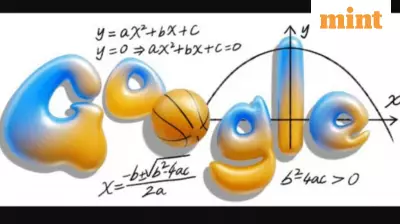
In a special tribute to one of biology's most fundamental concepts, Google showcased an interactive doodle on Thursday, 13th November, celebrating deoxyribonucleic acid, or DNA. This molecule, which holds the genetic blueprint for all known life, took center stage on the search engine's homepage, captivating students and curious minds across India.
The Story Behind the DNA Doodle
This educational initiative is perfectly timed with the academic calendar. Google revealed that searches for DNA peak annually during the school year, particularly in the month of February. The 'Learning about DNA' Doodle, which first launched in the United States on 10th September 2025, made its appearance for Indian users on 13th November. The tech giant designed this feature as a direct response to it being one of the most frequently searched biology topics on its platform.
What Does the DNA Doodle Show?
The Google Doodle provides a visual celebration of the iconic double helix structure. According to Google's description, this 'Back to School' Doodle dives into DNA, which it defines as a molecular polymer carrying the genetic instructions for the growth, reproduction, and function of every living organism. It consists of two chains that coil together to form the famous double helix, essentially serving as the unique genetic code for every individual. Interestingly, no single artist has been credited for the creation of this particular doodle.
A New Interactive Learning Experience
Clicking on the Doodle offers a unique and modern learning experience. Unlike typical doodles that lead to standard search results, this one directs users to Google's artificial intelligence–powered search, known as AI Mode. The interface is prefilled with a prompt that reflects a student's genuine curiosity: "I remember DNA has A, T, C, and G… but who decides which ones go where? How does the sequence get set, and what happens if something goes out of order? What’s a memory device I can use on an upcoming test?"
This innovative approach provides immediate, AI-generated explanations to complex biological questions, making it a powerful study tool. However, Google maintains a note of caution at the bottom of these AI responses, clearly stating that "AI responses may include mistakes," encouraging users to verify critical information.
This initiative highlights Google's evolving role in education, seamlessly blending its core search functionality with AI to create a more engaging and helpful resource for students diving into the complexities of life science.





